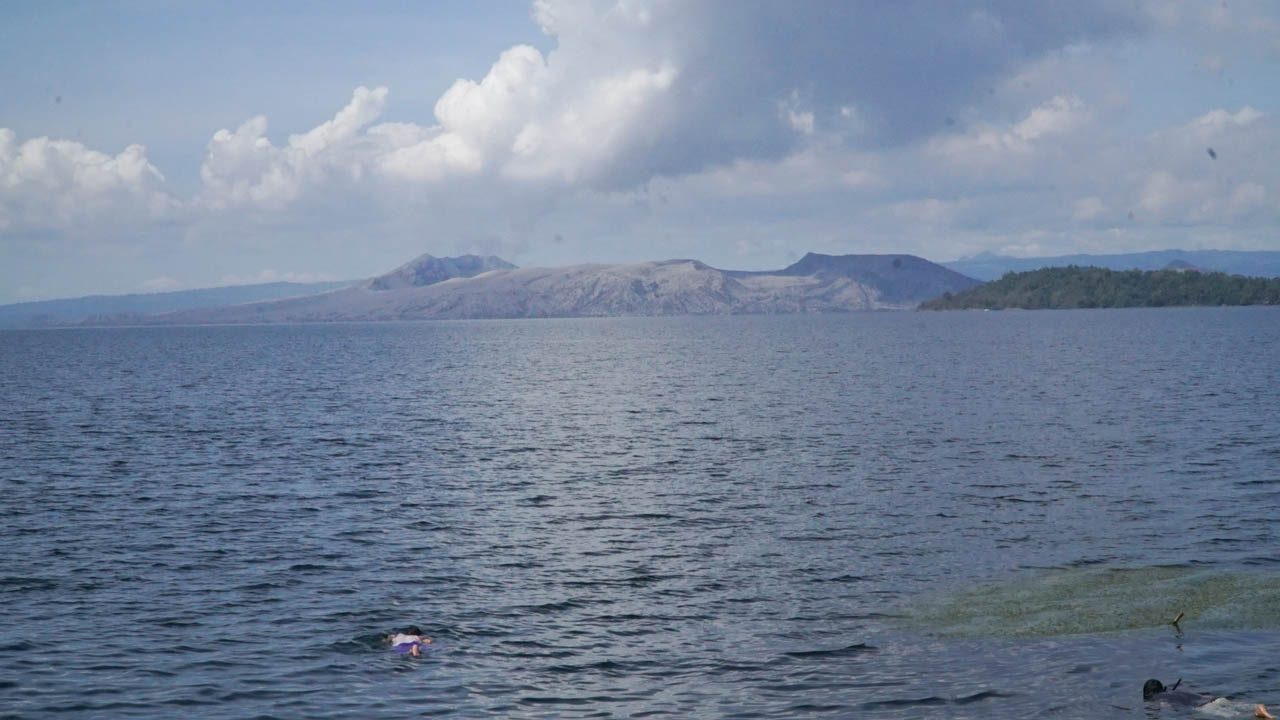SUMMARY
This is AI generated summarization, which may have errors. For context, always refer to the full article.


MANILA, Philippines – Taal Volcano in the province of Batangas was downgraded from Alert Level 4 to Alert Level 3 on Sunday morning, January 26, two weeks into its restive period.
Alert Level 3 means there is now a “decreased tendency towards hazardous eruption.”
But the Philippine Institute of Volcanology and Seismology (Phivolcs) cautioned that it “should not be interpreted that unrest has ceased or that the threat of a hazardous eruption has disappeared.”
What happens under Alert Level 3? With Taal at Alert Level 3, these could still occur:
- sudden steam-driven and even weak phreatomagmatic explosions
- volcanic earthquakes
- ashfall
- lethal volcanic gas expulsions
Taal Volcano Island and lakeshore areas may be threatened.
What should the public do? Phivolcs is still recommending that entry into Taal Volcano Island, classified as a Permanent Danger Zone, be prohibited.
Areas within a 7-kilometer radius from the main crater should also be off-limits. This is down from the 14-kilometer radius implemented during Alert Level 4. (READ: LIST: Batangas towns, cities where lockdowns are lifted as Taal down to Alert Level 3)
“Local government units are advised to assess areas outside the 7-kilometer radius for damage and road accessibilities and to strengthen preparedness, contingency, and communication measures in case of renewed unrest,” Phivolcs said.
“People are also advised to observe precautions due to ground displacement across fissures, frequent ashfall, and minor earthquakes. Communities beside active river channels particularly where ash from the main eruption phase has been thickly deposited should increase vigilance when there is heavy and prolonged rainfall since the ash can be washed away and form lahars along the channels,” it added.
“Civil aviation authorities must advise pilots to avoid flying close to the volcano as airborne ash and ballistic fragments from sudden explosions and wind-remobilized ash may pose hazards to aircraft.”
What were the reasons for the downgrade?
Less frequent volcanic earthquake activity: “Significant earthquakes recorded by the Philippine Seismic Network across the Taal region declined from 959 to 27 events per day and peak magnitudes of 4.1 to 2.1” between January 12 and 24.
“The Taal Volcano Network likewise recorded a downtrend in volcanic earthquakes from 944 to 420 events per day” between January 17 and 24 “with a corresponding decline in the daily total seismic energy released.”
Slower ground deformation of the Taal Caldera and Taal Volcano Island: “Global Positioning System data recorded ground deformation after the main eruptive phase that included sudden widening of Taal Caldera by ~1 meter, uplift of its northwestern sector by ~20 centimeters, and subsidence of the southwestern part of [the island] by ~1 meter. These patterns were followed at much smaller rates” between January 15 and 22.
Weak steam or gas emissions at the main crater: “After the main eruptive phase, activity in the Taal main crater diminished to infrequent weak ash eruptions and longer episodes of degassing or steaming that generated steam-laden plumes <1000 meters tall.”
“Sulfur dioxide…fluctuated between a high of ~5,300 tons per day on January 13 to a low of ~140 tons per day on January 22, but has steadied at an average of 250 tons per day in the last 5 days.”
What happens next to Taal? Phivolcs reiterated on Sunday that the threat is not yet over. The Taal unrest could escalate again.
“Should an uptrend or pronounced change in monitored parameters forewarn a potential hazardous explosive eruption, the alert level may be raised back to Alert Level 4,” the agency said.
“People residing within areas at high risk to base surges who have returned after the alert level was stepped down must thus be prepared for a quick and organized evacuation at such time.”
If Taal activity continues easing, then the alert level could be further lowered to Alert Level 2.
Taal Volcano started erupting last January 12, a swift escalation that led to Alert Levels 2, 3, and 4 all being declared that same day.
The highest is Alert Level 5, which would mean that a hazardous eruption is already in progress. – Rappler.com
Add a comment
How does this make you feel?
There are no comments yet. Add your comment to start the conversation.